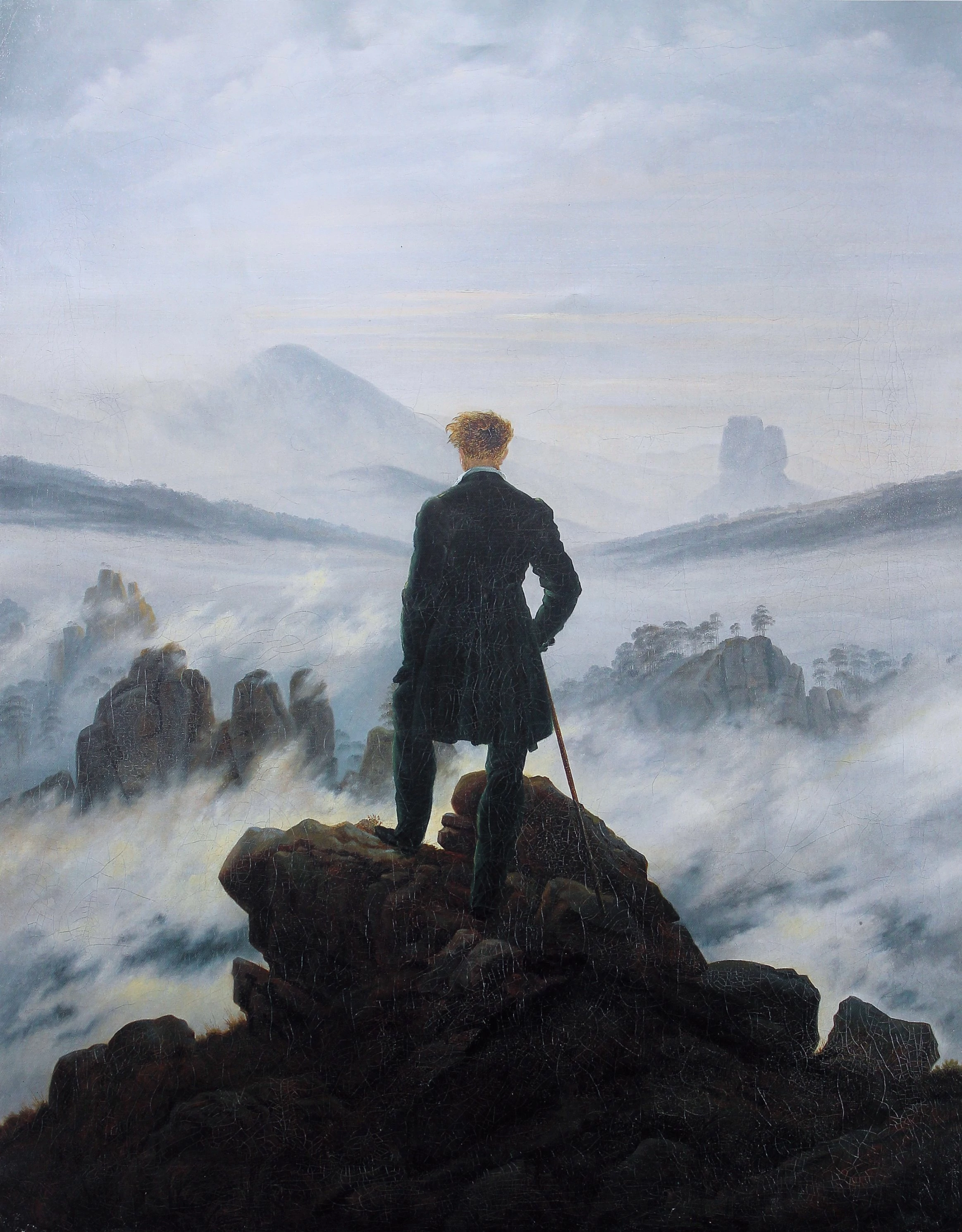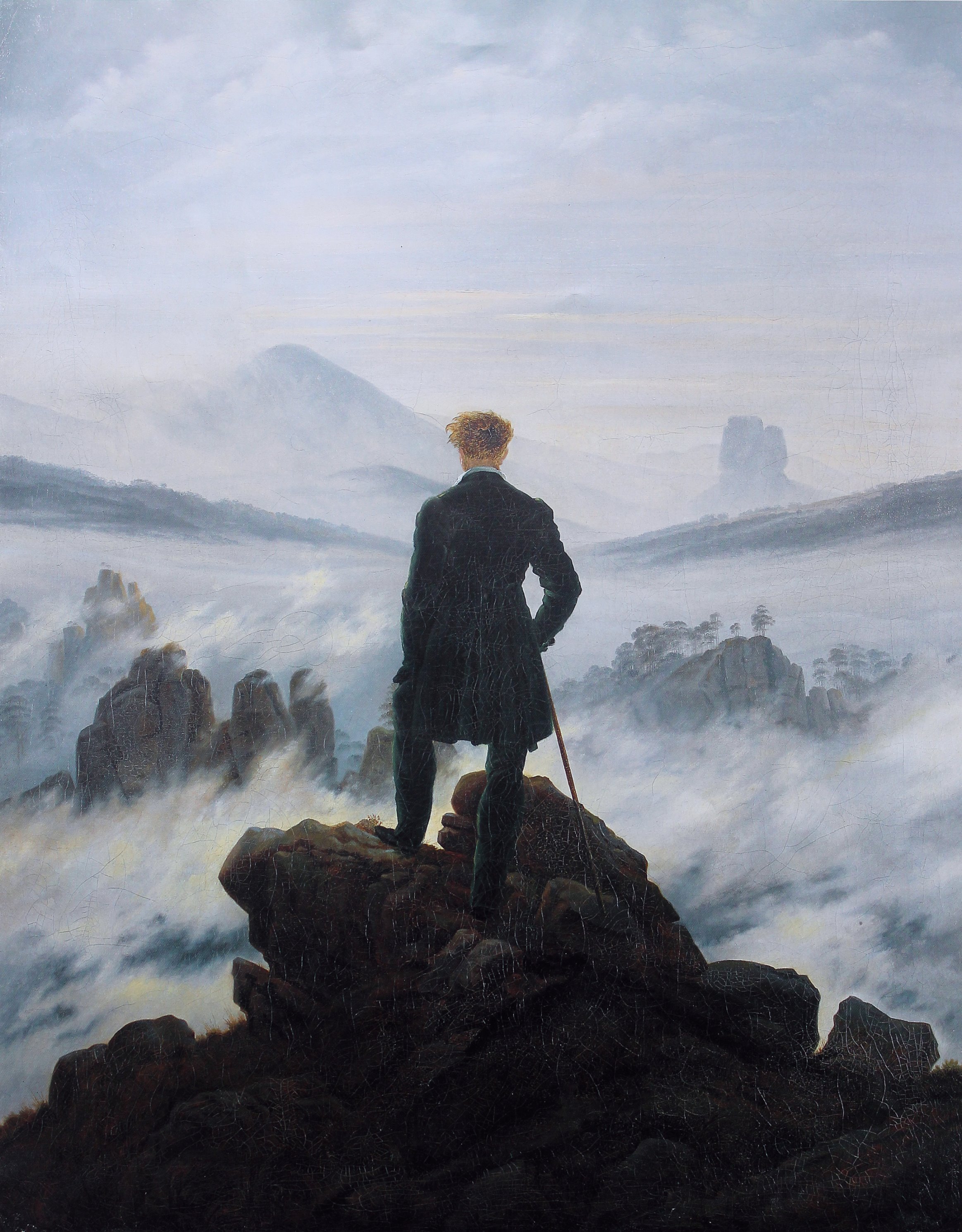


Friedrich described his approach to landscape painting saying “The artist should paint not only what he has in front of him but also what he sees inside himself.” Friedrich brought this practice to the Wanderer, splicing together a variety of landscapes from the Elbe Sandstone Mountains in Saxony, that he'd previously sketched in person. The distant mountain peak to the left of the figure resembles either the Kaltenberg peak in Austria or the Růžovský vrch, the Rosenberg mountain. Below the mountain a fingered rock craig looks like the million-year-old Bastei rock formation. The strange, vertical pillar in the far distance to the right of the figure is based on the Zirkelstein, a table hill topped by a 130ft tall sandstone rock on the border between Switzerland and the Czech Republic. Below the Zirkelstein is the Gamrig, a rock formation that overlooks the village of Waltersdorf. Even the rocks the titular wanderer stands on was pulled from nature. The boulder’s dramatic silhouette inspired by the jagged sandstones atop the Kaiserkrone, or “imperial crown” another table hill near the Zirkelstein.
